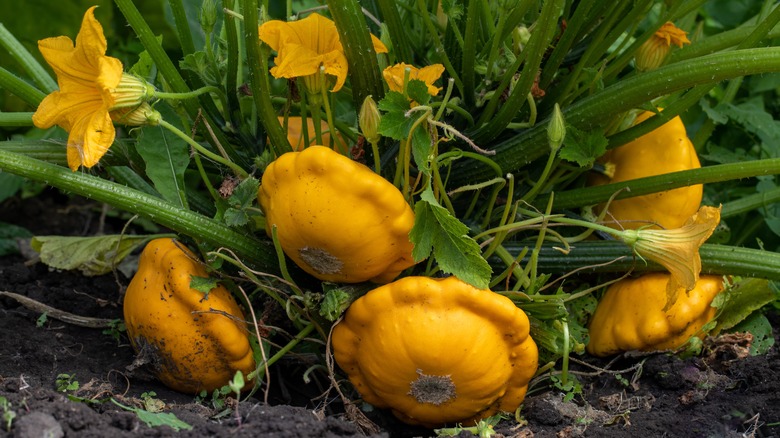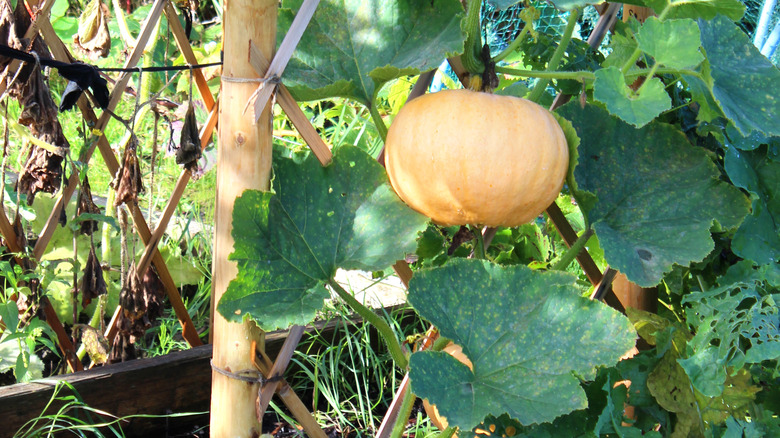The Best Way To Grow Squash In A Crowded Garden
Squash is a staple in vegetable gardens, with many varieties to choose from. However, this prolific plant typically requires a great deal of space to grow, and some types of squash grow quite large. This poses a problem when sharing a garden with other vegetables. A sprawling squash plant can take over a garden bed, inhibiting neighboring plants. This is one of the mistakes everyone makes when planting squash with other vegetables. However, vertical gardening is the answer to this problem.
Winter squashes, such as butternut and pumpkin, tend to be heavier and are not always good candidates for vertical gardening. However, squash — such as summer squash — are lighter in weight and are harvested early, making them perfect for vertical gardening. While bush squash is compact and does not require support, vining squash can be trained to grow vertically in a small footprint. This method of growing provides greater yield with less fruit rot and adds dimension to the garden.
How to grow squash vertically
Creating a structure for your squash to grow vertically is the first step. This gardening hack will help with growing vining plants and is where you can create a feature in your vegetable garden as well as a support structure for your bounty. Some of the types of structures that can be used include a simple A-frame — which works best in larger spaces — obelisks, cattle panels, and netting. Additionally, a flat trellis can be secured to a wall. These can be fun DIY projects, and some can be purchased premade.
After the structure is secured, it's time to plant seeds or small starter plants from the nursery. Make sure to choose a sunny spot with a minimum of 6 hours sunlight and rich soil. Plant from three to four seeds per support depending on the sturdiness of the structure. A vertical planting will require more water, however mulch will retain water, reducing evaporation. Train plants to grow upward as they begin to grow and anchor them loosely with plant clips, ties, or garden twine to provide support without damaging the vine.
Benefits of vertical gardening
Vertical gardening isn't only limited to those with large backyard spaces; it is also a great solution for urban gardeners with smaller spaces, such as a balcony. Here, you can plant squash in a large pot and use a large tomato cage for support. There are many benefits to vertical gardening such as raising plants up from the ground providing better sun exposure, better air circulation, and diminishing the risk of disease and pests. This method of planting makes squash easier to harvest, and the hanging fruits provide a unique garden feature. Consider planting zucchini, summer squash, and curved vining squash such as yellow crookneck.
Not only does a vertical garden design keep walkways free of plants, it also keeps foliage dry and inhibits the growth of mildew and fungal disease. Additionally, it prevents squash from rotting on the ground, providing less waste. A trellised plant allows for more sun, attracting pollinators. If you find the need to hand pollinate, consider using a bathroom staple you keep on hand: a Q-tip. As far as bugs are concerned, they have no place to hide on a vertical plant; the upright growth allows for easier identification of pests that can be removed before they do harm. Creating a vertical garden is a fun way to grow more squash and provide a healthier harvest as well as a point of interest in the garden.


